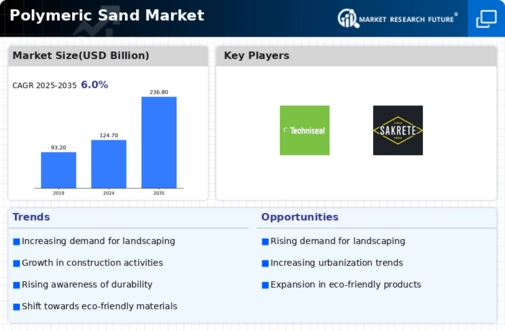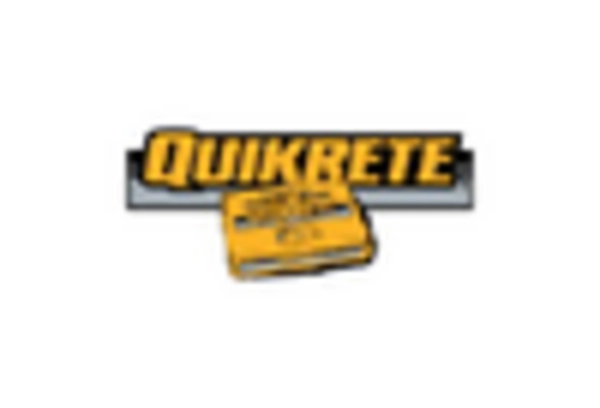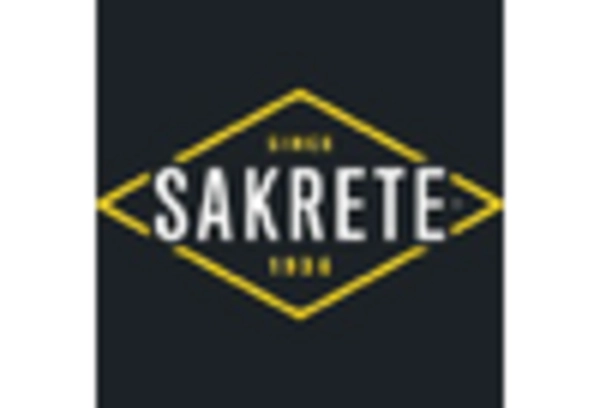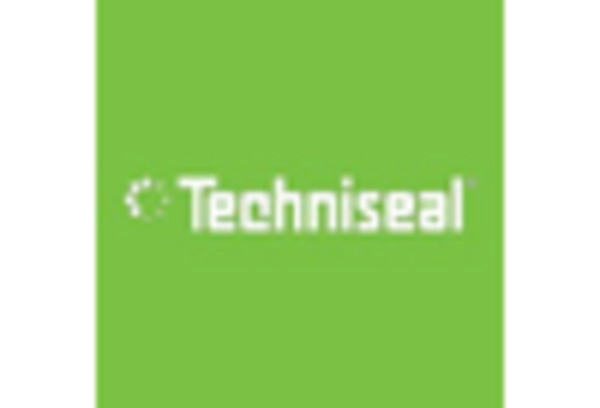Market Analysis
In-depth Analysis of Polymeric Sand Market Industry Landscape
The polymeric sand market is influenced by various market dynamics that shape its growth and trends. Polymeric sand, also known as joint sand or paver sand, is a mixture of fine sand and polymer additives used for filling the joints between pavers, bricks, and stone surfaces. One of the key driving factors for the growth of the polymeric sand market is the increasing demand for landscaping and hardscaping activities in residential, commercial, and public infrastructure projects. As urbanization continues to expand, there is a growing need for durable and aesthetically pleasing outdoor spaces, driving the demand for polymeric sand as an essential component in hardscape installations.
The North American market accounted for the second-largest share of the global market and is projected to witness healthy growth during the review period. The surging demand for sustainable construction materials along with rising reconstruction activities across the US and Canada are expected to be the primary factors driving growth of the regional market.
Additionally, the rise in construction activities, particularly in developing economies, contributes to the market growth of polymeric sand. The construction industry utilizes polymeric sand for various applications such as patios, walkways, driveways, and pool decks due to its superior performance in preventing weed growth, resisting erosion, and stabilizing paver joints. Moreover, the growing trend towards sustainable construction practices has led to the adoption of polymeric sand as it helps in reducing water consumption and minimizes the need for chemical weed killers, aligning with environmental regulations and preferences.
Furthermore, advancements in product formulations and technology play a significant role in shaping the market dynamics of polymeric sand. Manufacturers are continuously innovating to develop high-performance polymeric sand products with improved characteristics such as enhanced strength, flexibility, and color options. These innovations cater to the evolving needs of contractors, landscapers, and homeowners, driving the market towards higher-value products and premium offerings. Additionally, the introduction of easy-to-use polymeric sand solutions that require minimal mixing and installation time has expanded the market reach to DIY enthusiasts and homeowners, further fueling market growth.
Market dynamics in the polymeric sand industry are also influenced by factors such as pricing trends, raw material availability, and competitive landscape. Fluctuations in raw material prices, particularly polymers and silica sand, can impact the overall production cost and profitability for manufacturers. Additionally, the availability of alternative jointing materials such as traditional sand or mortar may pose a challenge to the widespread adoption of polymeric sand, especially in regions where cost-consciousness prevails. Moreover, intense competition among key players in the market leads to pricing pressures and promotional activities, driving innovation and market consolidation.
Geographically, the market dynamics of polymeric sand vary across regions due to factors such as climate, construction practices, and regulatory frameworks. In regions with harsh weather conditions or high levels of precipitation, the demand for polymeric sand with superior water resistance and freeze-thaw stability is higher. Conversely, in arid or tropical regions, the emphasis may be more on UV resistance and color retention properties. Regulatory standards and building codes also influence the adoption of polymeric sand, with some regions mandating specific product certifications or environmental compliance measures.
Overall, the market dynamics of the polymeric sand industry are characterized by a combination of demand drivers, technological advancements, competitive pressures, and regional variations. As the construction and landscaping sectors continue to evolve, the polymeric sand market is expected to witness sustained growth driven by the need for durable, low-maintenance outdoor surfaces and the ongoing pursuit of sustainable building practices.

















Leave a Comment